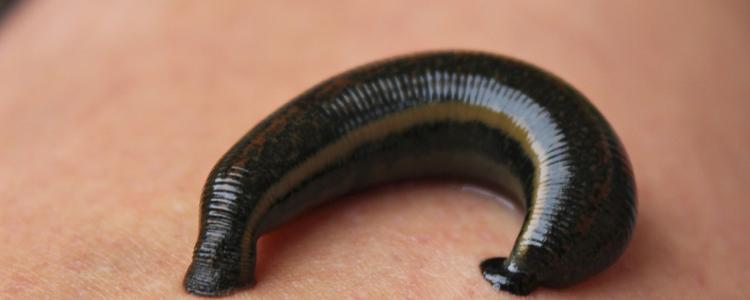What are leeches?
Leeches are segmented worms. They commonly live in rainforest and jungle environments around the world, particularly South East Asia.
Travellers with an itinerary that takes them trekking through rainforest and jungle environments can be at significant risk of coming into contact with leeches as they walk through damp humid areas and wade through freshwater and rivers.
Leeches are not known to spread disease however careful removal of leeches is important to avoid subsequent infection from the wound.
Leeches wait on jungle vegetation such as leaves twigs and low lying shrubs. They easily attach themselves to clothes and make their way to the lower legs where they can weave their way through socks and into trekking boots, often biting around the feet. Some leeches can make their way to other areas such as the mouth, nostrils and genital areas and are a particular risk to those who bathe in freshwater.
Leech bites are often painless so are not always obvious, however blood stained socks and clothing are a clue to their presence . When leeches bite, their teeth clamp onto the skin and with a suction like action start to feed on the host’s blood. Leeches feed for around 30 minutes but are known to feed for longer. Once they have finished feeding they will naturally detach themselves to digest.
Leeches are not known to spread disease, however, careful removal of leeches is important to avoid subsequent infection from the wound
Removing leeches
It is extremely difficult to detach a leech from the skin whilst it is feeding and if it is pulled off the skin, the wound is likely to bleed due to the anticoagulant they release to feed and there is a risk that the wound will become infected and ulcerated which may also cause scarring.
The best thing to do is to wait until the leech has finished feeding and to detached itself.
In an emergency, salt, a lighter flame or cigarette to burn the leech can irritate it enough that it will release itself from the skin. There is a risk however that these methods of removal can cause the leech to vomit its stomach contents into the wound and cause infection.
Leech bite wounds can bleed for some time. This can be reduced by applying pressure to the wound. An antiseptic should then be applied to clean the area which should then be kept clean and dry to prevent any infection. The wound may itch as it begins to heel but it is important to avoid scratching as this can delay the heeling process and introduce other infections. Taking a topical or oral antihistamine can help reduce any itching.
Personal Protection
Any traveller trekking in hot humid conditions where leeches are known to be a problem should wear leech socks to protect themselves. Leech socks come up over the knee and are made of tightly woven fabric that prevent leeches finding their way to skin.
Leech socks should be worn over socks but under trekking boots. Treating leech socks with 100% DEET will offer greater protection.
If necessary, it is possible to make your own leech socks. This can be done by treating ordinary hiking socks with 100% DEET. These should then be worn pulled up towards the calf to cover the leg as much as possible.


No Comments
Be the first to start a conversation